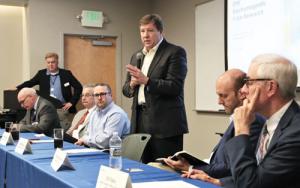EPRI shows a way to mitigate EMP
Sounds like a dystopian tale. An adversary nation explodes a nuclear bomb in the atmosphere above the U.S. Electromagnetic pulses from the blast knock out key components of the electric grid including substations. Widespread blackouts last months or more since the components are challenging to replace. The foundation of our society collapses — the supply of water, food and fuel, telecommunications, etc. — with devastating consequences for the public.

Some believe this is a threat, however unlikely. So, the Electric Power Research Institute has intensely studied this scenario in close cooperation with the U.S. Department of Defense and other security agencies. On April 29, EPRI reported important findings and presented and demonstrated them at an event attended by Public Utilities Fortnightly.
It turns out that such an atmospheric blast would transmit three kinds of electromagnetic pulses to the ground. Two of the three kinds are of concern, as we understand it. Of these two, one kind of pulse can be mitigated so damage to the transmission and distribution system is minimized. And the other kind could cause some grid interruptions though these would be subject to restoration.
There's more research to be done. For example, would generating facilities be affected and could those impacts be economically mitigated?
Of course, what if an adversary nation did explode a nuclear bomb in the atmosphere above the U.S.? The catastrophe of a major war would ensue, with very many terrible effects aside from that from electromagnetic pulses.
 EPRI CEO Mike Howard introduces the panel of experts that then discusses EPRI’s research on the electromagnetic pulse threat.
EPRI CEO Mike Howard introduces the panel of experts that then discusses EPRI’s research on the electromagnetic pulse threat.
As with the threat from cyberattacks on the essential infrastructure of our society, the grid, here's another case in which the electric industry is increasingly working closely with the federal government to safeguard the national security and public.


